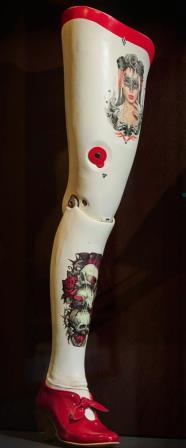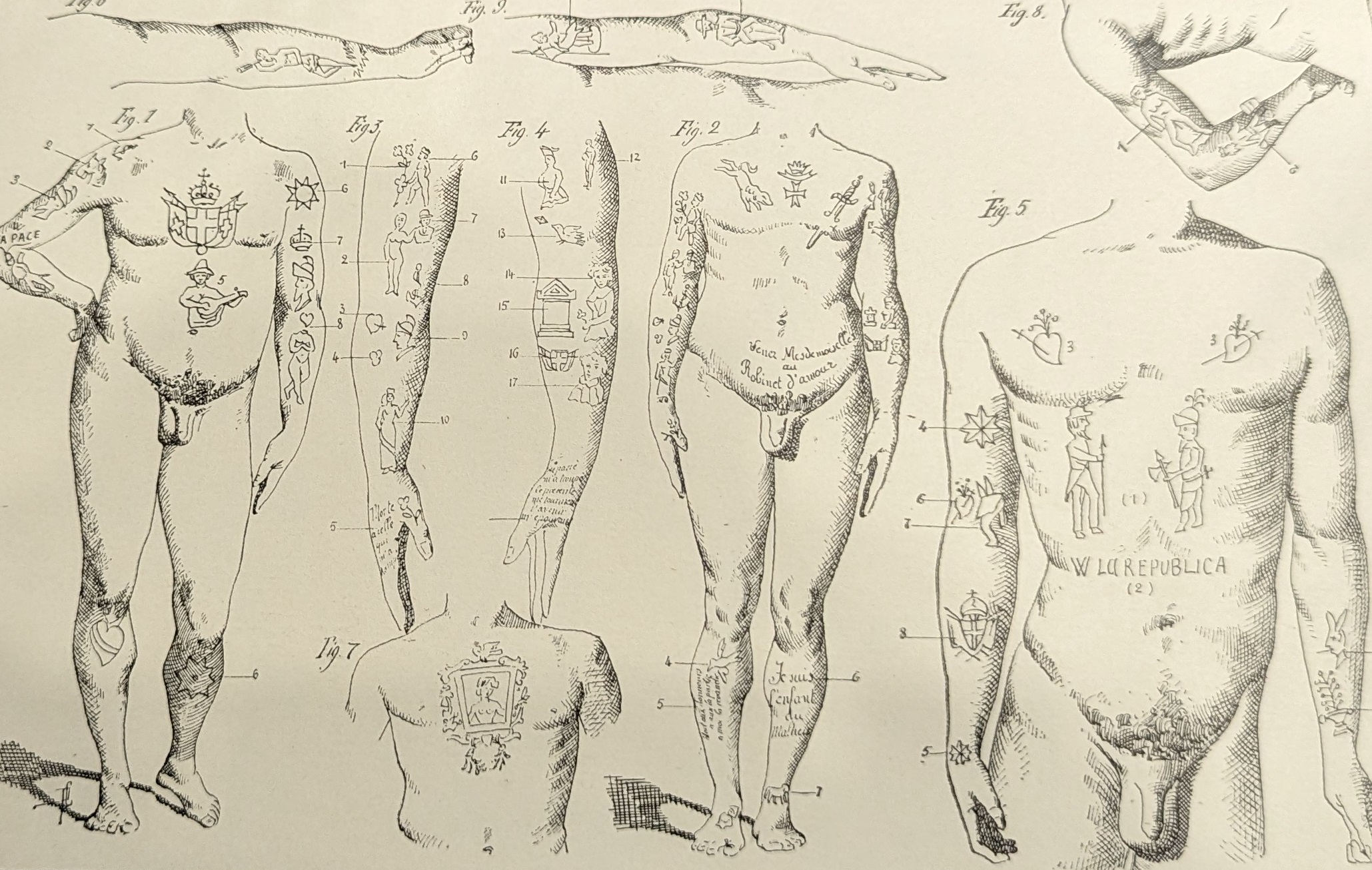Skin markings can be natural, artificial or cultural. They can be marks of transformation, of illness or of self-expression.
Scars in the 1500s and 1600s were seen as external manifestations of internal moral decay. Indications, possibly, that the afflicted person was contagious, prone to violence, or sexually promiscuous. Scarring was also a legacy of domination and punishment – via the whip, the branding iron and the knife.
In the 1800s a French anthropologist developed the Bertillon System which used distinctive features like scars and deformities to track suspects and criminals. Alongside phrenology, the study of scars and marks grew in popularity in the 1800s. This was based on the idea that the character of a person could be uncovered by studying the marks on their skin.
Tattooing, once practiced across Europe by groups such as the Celts, Pict and Germans, became associated with criminals and enslaved people. Forcible tattooing was often carried out on convicts and army deserters.
Peter Lowe
The whole course of chirurgerie (1597)
Closing the skin was an art, not a science, in the 1500s and 1600s. Each surgeon had their own ideas, their own techniques and their own custom tools. Some surgeons argued that wounds should be left open to heal and only covered with a dressing, which could be composed of spiders’ webs, clay or turpentine.
This text by Peter Lowe, founder of the Royal College of Physicians and Surgeons of Glasgow, was important in the standardisation of surgical procedures. It covers gunshot wounds, trepanation and, as this illustration shows, dry sutures. These were used when it was important that the scar was fine. It involved no stitching, instead cloth was soaked in a glutinous plaster and laid on the wound. Once it had dried to the skin, the cloth was sewn together until the wound was forced closed.
Prosthetic leg (1980s)
The design on this wooden prosthetic was carried out by an orthopaedic company in Augsburg, Germany, for a woman who had lost her right leg a decade earlier in a car accident.
Although new materials such as carbon fibre, Kevlar and titanium began to be used in the late 1900s many, such as Kathrin, the owner of this prosthetic, choose to continue to use materials they have been accustomed to since childhood.
Prostheses can now be coated in colour-matched silicone to replicate skin and some even have freckles, veins and hairs.
These prostheses are designed to blend naturally and to mitigate the stigma associated with limb loss.
By contrast, the decorative ‘skin’ of designs such as Kathrin’s express the character of their users and promote pride and positivity about their uniqueness.
Cesare Lombroso
L'homme criminel (1895)
This book, by Italian physician Cesare Lombroso, brought about a shift in criminology from the study of crime to the pseudo-scientific study of criminals.
Lombroso worked first as a professor of psychiatry before moving into forensic medicine. He argued that the criminal’s urge to get tattoos was one way they could be identified, even before they committed a crime. According to Lombroso, ‘Tattooed persons who are not in prison are either latent criminals or degenerate aristocrats. If someone who is tattooed dies in freedom, then he does so a few years before he would have committed murder’.
He went even further – exploring the different meanings of tattoos – the type of criminal you were was shown, according to Lombroso, by which part of your body was tattooed and the tattoo’s meaning. He divided them into war, love, sex, religion and occupation.
Demonstration areola tattoo on breast mould
(2021)
An areola tattoo can be carried out for a range of reasons – for those who have burns, skin grafts or other scarring, and for those whose nipple is misshapen or miscoloured. The most common reason, however, is due to breast cancer surgery.
Not all survivors of breast cancer choose to undergo additional cosmetic procedures, but for those who wish it, tattooing is a minimally invasive procedure in comparison to replacing the nipple through skin grafting.
While areola tattoos are permanent, they are cosmetic tattoos which are slightly different to tattoos made
using traditional ink. Traditional tattoos are created deeper in the skin with a tattoo gun, while cosmetic
tattooing is done closer to the surface of the skin with a micropigmentation pen. Cosmetic tattoos also tend to have less concentrated pigment than traditional ink.
This blog was developed to accompany the exhibition Skin: A Layered History, which runs from 10 February 2023 to 13 October 2023.
Follow our Twitter account @RCPEHeritage or our Facebook page or sign up to our newsletter to get notifications of new blog posts, events, videos and exhibitions.







